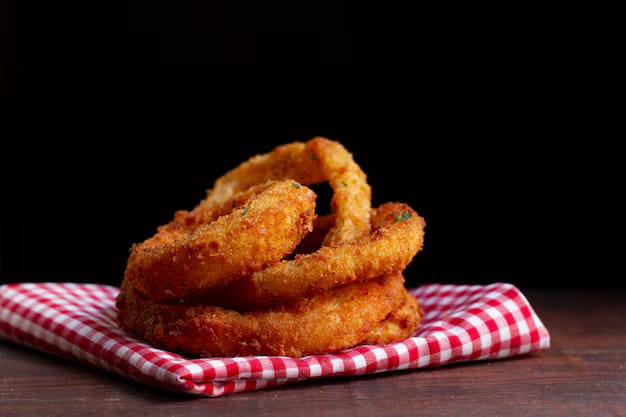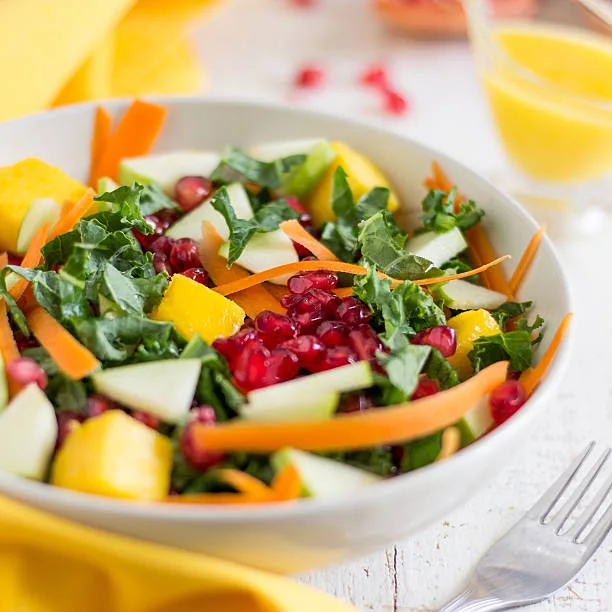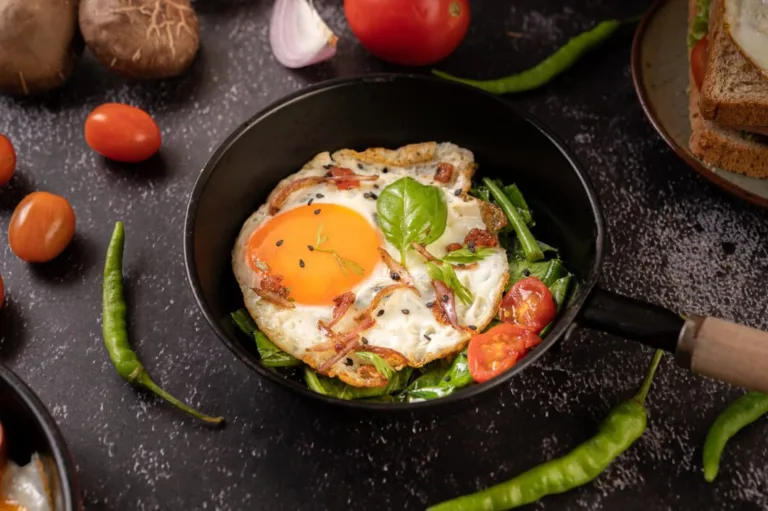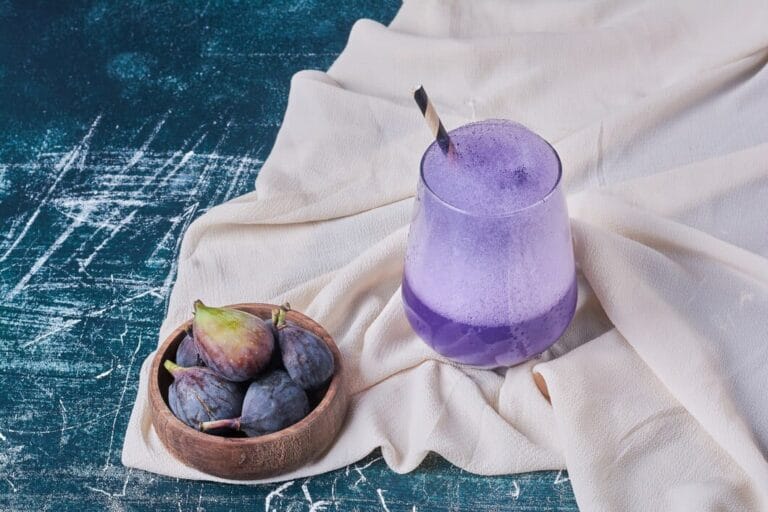Hello friends, I am Sahil, and today in this post, I invite you to my kitchen and a story – a story wrapped in rice, dal, ghee and love. We are going to cook something incredibly simple yet profound. Something that healed me when I was sick, comforted me when I was heartbroken, kept me warm on cold winter nights, and filled my heart with memories on days away from home.
We are going to make… Moong Dal Khichdi Recipe.
Yes, Khichdi! A dish that doesn’t need a special day. It is not reserved for festivals or festivals. It is for everyday, ordinary, emotional ups and downs, lazy Sundays and even a hurried weekday lunch. Whether you are fasting, celebrating, suffering from fever, or just missing home – Khichdi is always with you.
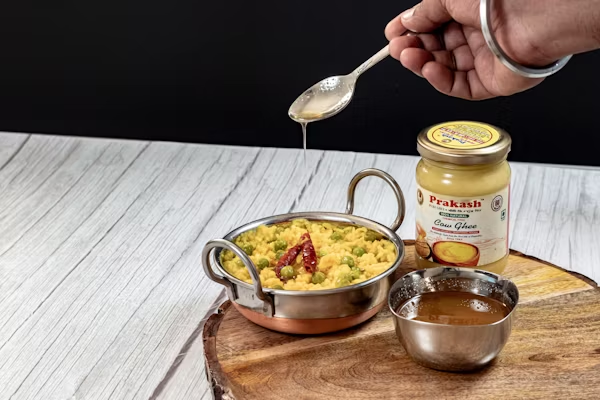
Khichdi is not just food. It’s a feeling.
Khichdi is packed with nutrients and is delicious. Whether you enjoy this recipe in a hostel or hotel, or try to make a quick meal in your home kitchen – it always comes in handy.
best other recipes, first watch iced coffee recipe , waffle recipe and chia pudding
So, let’s cook it together.
Required tools making moong dal khichdi recipe
- Bowl
- Pressure Cooker (affiliate link)
- Tadka Pan / Chhoti Kadhai
- Chhanni (Strainer)
ingredients for moong dal khichdi recipe
- 1½ cups rice (Kolam or any short-grain rice; avoid Sella rice)
- 1 cup whole moong dal (or yellow moong dal if preferred)
- 2 tbsp clarified butter (ghee)
- 1 tbsp oil
- 1 tsp cumin seeds
- 1-inch piece of ginger (finely chopped)
- 2 green chillies (chopped)
- 1 medium onion (finely chopped)
- 1 medium carrot (chopped)
- ½ cup green peas
- ½ cup chopped green beans
- ½ tsp turmeric powder
- ½ tsp red chilli powder (adjust to taste)
- ½ tsp coriander powder (optional)
- A pinch of asafoetida (hing)
- Salt to taste
- 4 to 5 cups water (depending on desired consistency)
- Fresh coriander leaves (for garnish)
How to make moong dal khichdi recipe step by step guide
Step 1: Wash and soak
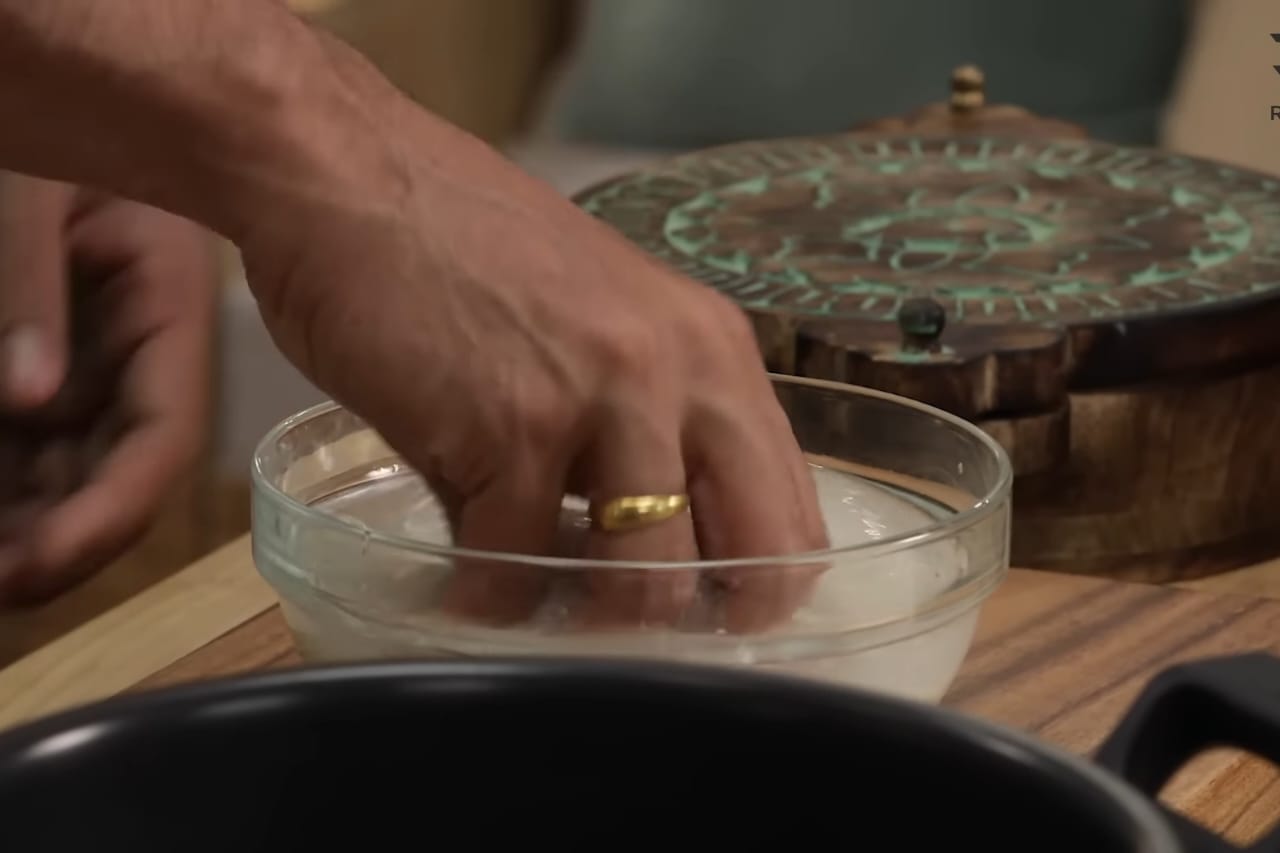
Wash 1½ cups of rice and 1 cup of whole mung beans thoroughly.
Soak both for 20-30 minutes. This helps them cook faster and more evenly.
Step 2: Give the Dal a Little Love (Optional Roasting Step)

If you don’t like your khichdi too mushy, this step is for you.
Heat a little oil or ghee in a pan (or directly in the pressure cooker if you’re using one).
Add the soaked and drained moong dal, and roast it gently for 2–3 minutes until it gets a light aroma.
This helps the dal stay a bit grainy and adds a warm, nutty flavor — like a cozy hug in a bowl.
Step 3: Add rice and some carrots for sweetness

Now, add your soaked rice to the same pan or cooker with the roasted lentils.
add in some chopped carrots – they add natural sweetness and a pop of color.
Step 4: Pour water and add plain spices

Add about 4 to 5 cups of water (depending on how thick or soupy you want your khichdi).
Then mix in:
- Half a teaspoon of turmeric
- Half a teaspoon of red chili powder (to your taste)
- Salt to taste
- Stir everything gently.
Close the pressure cooker lid and cook on medium heat for 3–4 whistles.
- If using a pot, cover and cook on low heat until rice and dal are soft and fully cooked (about 25–30 minutes).
Step 5: Prepare the Tadka (Tempering)
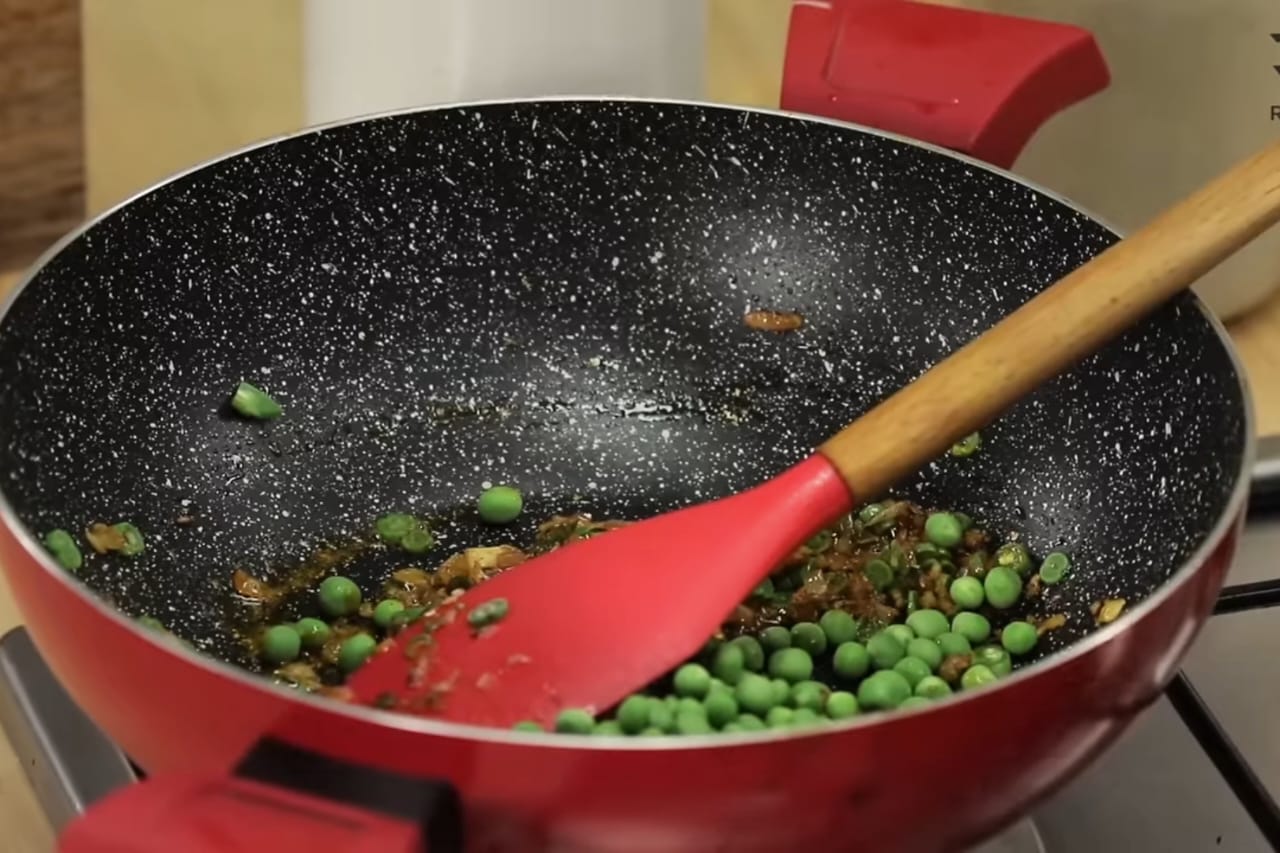
In a separate pan, heat 1 tablespoon of ghee and a little oil. Add cumin seeds and let them splutter. Add chopped ginger, green chilies and onions. Sauté until golden. Add a pinch of hing, red chilli powder, salt and a bit of coriander powder Toss green peas and chopped green beans. Cook for 2-3 minutes to keep their bright color.
Step 6: Mix Tempering into Khichdi
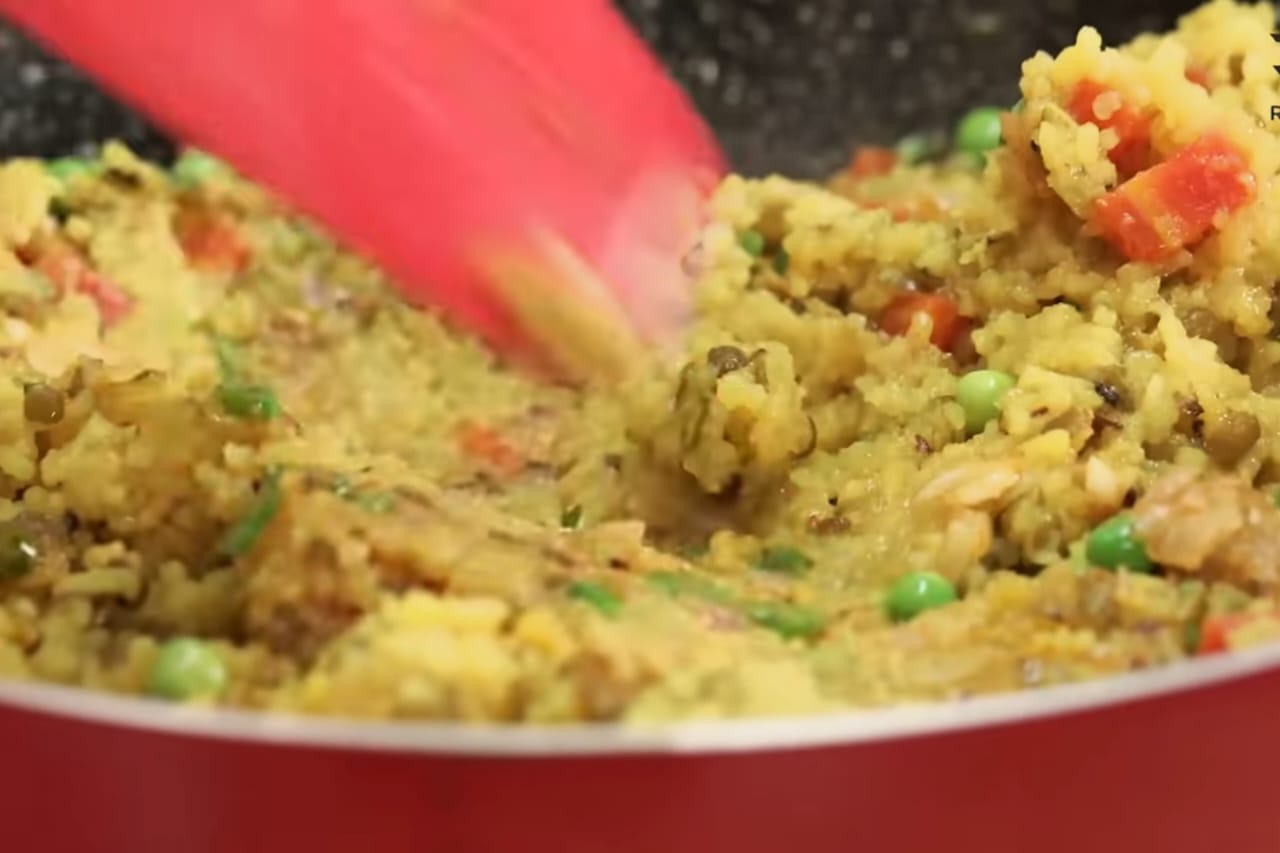
Once the khichdi is cooked, open the lid and mash or stir gently to combine. Add the tempering mixture to the khichdi and mix very well.
Let it sit covered for 5 minutes so that the flavors can meld beautifully.
Step 7: Final Touch
- Garnish with fresh coriander leaves.
- Serve hot with a dollop of ghee on top.

moong dal khichdi recipe
Ingredients
- 1½ cups rice Kolam or any short-grain rice; avoid Sella rice
- 1 cup whole moong dal or yellow moong dal if preferred
- 2 tbsp clarified butter ghee
- 1 tbsp oil
- 1 tsp cumin seeds
- 1- inch piece of ginger finely chopped
- 2 green chillies chopped
- 1 medium onion finely chopped
- 1 medium carrot chopped
- ½ cup green peas
- ½ cup chopped green beans
- ½ tsp turmeric powder
- ½ tsp red chilli powder adjust to taste
- ½ tsp coriander powder optional
- A pinch of asafoetida hing
- Salt to taste
- 4 to 5 cups water depending on desired consistency
- Fresh coriander leaves for garnish
Instructions
- Step 1: Wash and soak
- Wash 1½ cups of rice and 1 cup of whole mung beans thoroughly.
- Soak both for 20-30 minutes. This helps them cook faster and more evenly.
- Step 2: Give the Dal a Little Love (Optional Roasting Step)
- If you don’t like your khichdi too mushy, this step is for you.
- Heat a little oil or ghee in a pan (or directly in the pressure cooker if you’re using one).
- Add the soaked and drained moong dal, and roast it gently for 2–3 minutes until it gets a light aroma.
- This helps the dal stay a bit grainy and adds a warm, nutty flavor — like a cozy hug in a bowl.
- Step 3: Add rice and some carrots for sweetness
- Now, add your soaked rice to the same pan or cooker with the roasted lentils.
- add in some chopped carrots – they add natural sweetness and a pop of color.
- Step 4: Pour water and add plain spices
- Add about 4 to 5 cups of water (depending on how thick or soupy you want your khichdi).
- Then mix in:
- Half a teaspoon of turmeric
- Half a teaspoon of red chili powder (to your taste)
- Salt to taste
- Stir everything gently.
- Close the pressure cooker lid and cook on medium heat for 3–4 whistles.
- If using a pot, cover and cook on low heat until rice and dal are soft and fully cooked (about 25–30 minutes).
- Step 5: Prepare the Tadka (Tempering)
- In a separate pan, heat 1 tablespoon of ghee and a little oil. Add cumin seeds and let them splutter. Add chopped ginger, green chilies and onions. Sauté until golden. Add a pinch of hing, red chilli powder, salt and a bit of coriander powder Toss green peas and chopped green beans. Cook for 2-3 minutes to keep their bright color.
- Step 6: Mix Tempering into Khichdi
- Once the khichdi is cooked, open the lid and mash or stir gently to combine. Add the tempering mixture to the khichdi and mix very well.
- Let it sit covered for 5 minutes so that the flavors can meld beautifully.
My pro. tips and serving suggestion for better teste
If you like your khichdi a little grainy and not too sticky, roast the lentils before cooking. They hold their texture better that way. I usually roast mine in a little oil for that extra nutty flavor.
Once roasted, add the soaked rice, chopped carrots and enough water. Add turmeric, red chili powder and salt. That’s it – simple, isn’t it?
Variations? Oh, So Many!
- Want to make spinach khichdi? Just swap in chopped spinach and lots of cumin.
- Craving something hearty? Go for vegetable khichdi with bottle gourd, cauliflower, or pumpkin.
- Feeling under the weather? A plain khichdi with just ghee and a touch of salt is the best medicine.
Serve it right—because khichdi isn’t complete without its traditional companions. A spoon of ghee on top, some curd on the side, crunchy papad, and a tangy pickle. That’s when khichdi is ready—not before!
final Thought
Many others say that Khichdi may have inspired the British Kheer. It may or may not have. But one thing is certain – our moong dal khichdi recipe is old. Khichdi has been mentioned in Indian literature for over 2,000 years. Be it Laziza, Shirika or Khichdi – it has stood the test of time in all its forms.
This dish, despite its simplicity, gives us a glimpse – of humility, flexibility and the pride of culture.
So for me, making Khichdi is not just a culinary experience, it is an experience. Time slows down for a few moments.
It reminds me of my childhood, of my mother’s deep eyes roaming the plate and the taste of her hands.
Khichdi is a cherished legacy of our culinary culture.
So, whenever you are tired, feeling empty or hungry – make yourself a pot of hot khichdi.
It will not only fill your stomach, it will also satisfy your mind.

